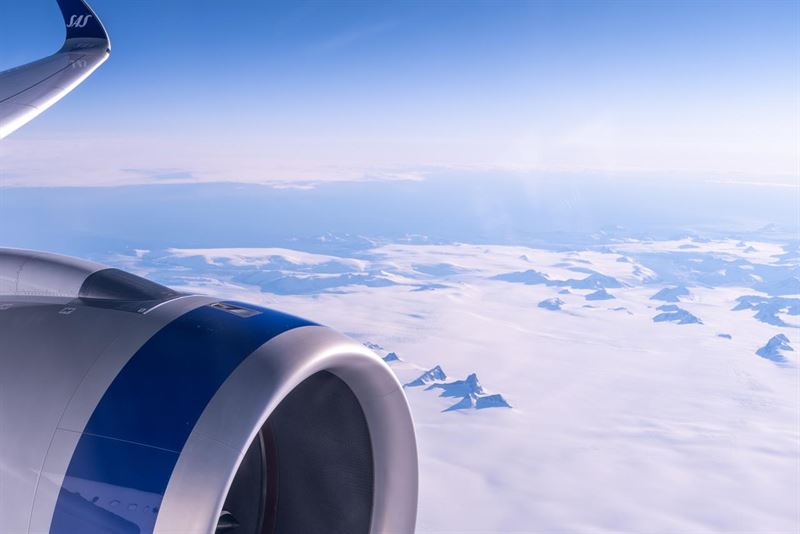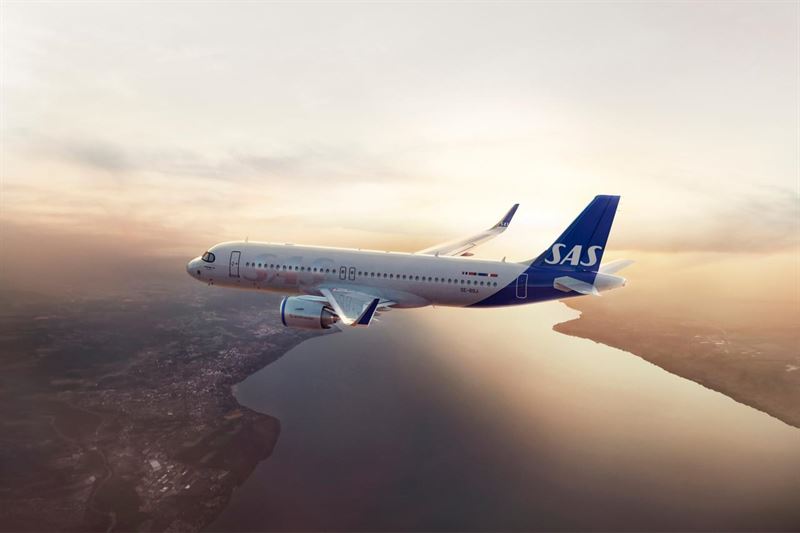SAS report: 1.2 mill. fewer seats from Scandinavia after closed airspace
A new report from SAS shows that Scandinavia has lost over 1.2 million departing airline seats in 2024 compared to pre-crisis levels. This is a direct consequence of closed airspace over Belarus, Russia, and Ukraine. Broader geopolitical instability in Asia and the Middle East has also contributed.
The report – the first edition of a new series of publications called SAS Aviation Insight – outlines how these restrictions are disproportionately impacting European carriers, with Western airlines facing steeper passenger declines than ones still able to fly over Russia.
Routes that once connected Scandinavia efficiently to Asia have become significantly longer and more expensive to operate. Following the closure of Russian airspace, flying routes such as Copenhagen–Shanghai would now involve up to two extra hours of flight time each way. This would lead to higher fuel consumption, reduced aircraft and crew efficiency, increased operating costs, and decreased cargo payload – further undermining the competitiveness of European carriers.
“As long as Russian airspace remains closed, this imbalance will persist. While we remain committed to connecting Scandinavia to Asia, the industry needs a level playing field to ensure long-term sustainability, fair competition, and reliable connectivity for our customers,” says Mads Brandstrup Nielsen, Senior Vice President Public Affairs at SAS.
The effects are visible in both route networks and passenger flows. SAS has confirmed it will not operate direct flights to China in 2025, while Chinese carriers have increased capacity on the same routes. Western airlines affected by airspace bans have seen passenger numbers fall significantly more compared to those still flying through restricted regions.
Despite these challenges, SAS plans to open a new route to Seoul in September 2025 – a service expected to remain competitive even under current overflight restrictions, as all airlines face similar operating conditions on this route.
Cargo and tourism also affected
In addition to the impact on passenger flights, SAS’ report highlights disruptions in air cargo operations. Longer flight routes have reduced cargo capacity and efficiency, affecting trade between Europe and Asia with delays and higher shipping costs.
The report also examines broader economic implications for the Scandinavian region. The reduction in direct flights has impacted tourism and business travel, leading to a decline in revenue for local economies and a shift toward virtual meetings.
SAS is exploring alternative routes and partnerships to mitigate the impact of closed airspace. At the same time the airline is investing in fuel-efficient aircraft and innovative aviation technologies to reduce operational costs, ensuring long-term resilience and competitiveness.
Images


